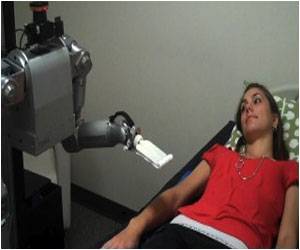Researchers have developed a new robot for healthcare facilities, that uses high-precision tactile sensors and flexible motor control technology.

In 2009, the RIKEN-TRI Collaboration Center for Human-Interactive Robot Research (RTC), a joint project established in 2007, unveiled a robot called RIBA (Robot for Interactive Body Assistance) designed to assist in this task. The first robot capable of lifting a patient from a bed to a wheelchair and back, RIBA charted a new course in the development of care-giving robots, yet functional limitations prevented its direct commercialization.
RTC's new robot, named RIBA-II, overcomes these limitations with added power and functionality. New joints in the robot's base and lower back enable RIBA-II to crouch down and lift a patient off a futon at floor level, the most physically strenuous task for care-givers and one that RIBA was not able to do. RIBA-II accomplishes this task by using newly-developed Smart Rubber sensors the first capacitance-type tactile sensors made entirely of rubber.
Printed in sheets and fitted onto the robot's arms and chest, the sensors enable high-precision tactile guidance and allow RIBA-II to quickly detect a person's weight from touch alone, guaranteeing patient safety.
Source-ANI








